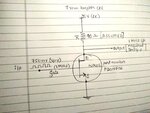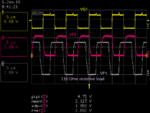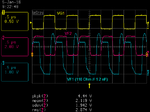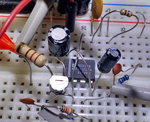pradeepdeepu
Newbie level 6
Hello,
i have 750 mili volt peak to peak square wave with 1Mhz .i want boost peak to peak voltage around 3 to 5 volt peak to peak please suggest me a circuit.
1)i have tried MOSFET switching circuit as attached below but MOFFET and drain resistor is heating up
and i was able to boost about only 2 volt peak to peak.
2)please suggest me solution and also if any alternating methods
i have 750 mili volt peak to peak square wave with 1Mhz .i want boost peak to peak voltage around 3 to 5 volt peak to peak please suggest me a circuit.
1)i have tried MOSFET switching circuit as attached below but MOFFET and drain resistor is heating up
and i was able to boost about only 2 volt peak to peak.

2)please suggest me solution and also if any alternating methods





